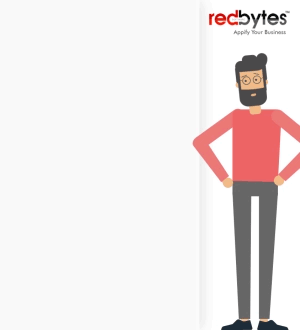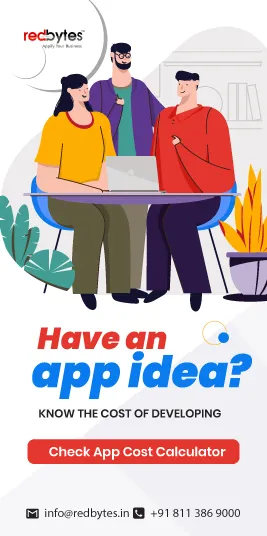A market study found that more than 87% of mobile users prefer to browse mobile apps rather than go to the browser. The rapid increase in the number of mobile users coupled with the convenience of anytime anywhere access has accelerated the reach and popularity of mobile applications.
Whether you already have a mobile app for your business or are planning to have one, then this blog is a must-read. We have collated the top mobile app design trends for 2023 in this blog.
Incorporating these trends in your mobile app will help improve your mobile app’s popularity, reach, and performance. And the best part is that it all converts into a profitable business.
Top Features of Mobile Apps
Trends may come and go, but certain attributes and functions always need to be at the core of your mobile app design. These core attributes are evergreen and help your app perform well in all economic climates.
So, even if you plan to incorporate the latest mobile app design trends, you need to ensure that they fit into these essential attributes, which are:
- Simplicity: It is one of the key factors essential to deliver a great user experience.
- Accessibility: The app needs to be accessible by all intended users on all kinds of mobile devices.
- Reversibility: It denotes the ability of the mobile application to recover from errors.
- Feedback loop: It is important to have a feedback system that will let you know the efficacy and issues in your app. Feedback aids in continuous improvement.
- Affordable: The app needs to be affordable, both for the user and the business.
Read Also: Impact of Minimalist UI Design
Best Mobile App Design Trends For 2023
1) Data Driven Design

It is one of the top trends of this year. Designers are exploring more about designs that performed well to implement them in upcoming mobile app designs. The data is derived from data analytics, machine learning, and deep analytics.
Various methods such as surveys, app analysis, behavioral research, A/B testing, and questionnaires are used to collate information. Other than these methods, analytics tools, techniques, and quantitative methods are also used to derive data-based design solutions.
All this data will give you information regarding user interaction, preference, function, and feedback that you can use to improve your mobile app.
2) App Login Authentication

We have always been using the user name and password for login. In some apps, this step is followed by a verification code. It takes some time for the user to get the verification code, add it and then enter the app.
The latest trend is using face recognition authentication. As more mobile devices are being developed with this feature, this app login authentication trend is a natural offset of this development.
3) Storytelling

2020 will see an increase in visual storytelling guides and techniques that captivate the user’s attention and keep bringing them back to your mobile platform. Storytelling also helps build the brand and improve user experience.
The mobile design is based on a visual framework that tells a story to the user, customizes their experience, and personalizes their mobile app journey. Storytelling is enhanced by visual imagery, creative content, and attractive animations.
4) Personalization

Impress your users with a personalized welcome and location-relevant content. You can greet return users with special attention and provide suggestions and recommendations based on their preferences, search history, user profile, and other details.
Most websites have cookies that track your navigation, search details, and your activity on their website. This data plus machine learning tools and deep learning techniques will help you deliver a personalized experience to your mobile app user.
For example, Starbucks stores all the details of the previous orders, so users can just browse them instead of checking the entire menu while placing a new order.
5) AI & Conversational Interface

This mobile app design trend has been steadily gaining popularity over the last few years. It is important to create a conversational interface where mobile app visitors can ask questions, clarify their doubts, or give their feedback.
These conversations happen through chatbots that are AI-powered and manned by customer care staff of the company.
Read Also: Effective App Launch Marketing Strategies that can Drive Success
6) Animation and 3D Graphics

One of the key trends of mobile app design is animation and 3D graphics. Animated illustrations are a fun and attractive way to share information and captivate the audience. Dynamic functional animations include transitions, button presses, and other elements.
You can use animation elements to illuminate a text or an image, provide a visualization effect, or create a dynamic user experience. When it comes to 3D images, there is an argument between great user experience and higher load time.

Though a heavy image can slow down the page loading speed, it enhances the user experience. Three dimensional images allow the user to visualize the product and gather the details. However, to ensure the best app performance, you need to make optimum use of 3D graphics and animations.
7) White Space, Fresh Color Palates, Gradients & Overlapping Effect

The raging mobile design trend is the minimalistic design, which features a lot of white space. Design elements like gradients, fresh color palates, and overlapping effects coupled with typography create a stunning user interface.
The expanse of white on the web page draws the eye to the text or image placed on it. This design can be further enhanced with dark or light backgrounds with gradients of fresh colors. The use of overlapping text and images further adds to the minimalistic design.
The use of these design elements helps create a clear, concise, and clutter-free interface. The best example of the minimalistic design is the “FB5” design of Facebook. In this design, the top heavy blue block was removed and the interface was adapted to a dark mode that enhanced video-watching experience.
Another example of the minimalistic design is the Office 365 icon. The latest design has abstract shapes, lesser text area, and a more geometric design. The rich color and texture highlight the icon.
8) Navigational Elements Placement

Creative placement of navigational elements is one of the popular trends of this year. Traditionally, mobile app designs had a Menu bar that contained all the navigational buttons.
Many apps had small icons for the categories. The current trend involves having hidden, vertical, parallax, infinite, horizontal, or modular scrolling options.
Another trend is to have the navigation bar disappear, if not used for a long time. Apple, Meizu, and Huawei have gone a step further in their mobile apps. These mobile apps don’t have a Home button. Users can use swipe or other key gestures to navigate.
9) Typography

Typography is one of the essential elements of mobile app design. The size, shape, and design of the font first grab the user’s attention before the content does.
Typography can be used to focus on key points and improve user experience. Motion-based and 3D typography is also quickly gaining popularity.
10) Augmented Reality and Virtual Reality

Augmented Reality (AR) and Virtual Reality (VR) help the user get a realistic picture of the digital world. It helps create an immersive user experience and also enables users to grab more information quickly. Augmented reality can be used in various ways depending on the purpose of your mobile application.
Google Maps, for example, uses AR to simulate user behavior. The top half of the screen displays the real location while the bottom half shows the map. A large 3D arrow helps the user navigate. Augmented reality is also used in online stores selling sunglasses and eyeglasses.
This technology enables the user to check the fit and look of the eyewear before purchasing it. There’s another Google app – Just a Line that’s making the best use of AR. Designed to support multi-user augmented reality interaction, this application lets the user capture a picture using the camera.
The user can then tap the screen and draw anything on the screen. Identify the best way to incorporate these technologies into your mobile app to deliver a stellar user experience.
Read Also: 11 Steps to create a Mobile Application
Final Words
A mobile app is a great asset for your business. It not only helps you reach out to a wider audience, but also allows the user to always be in contact with your business.

Whether you want to set up a new mobile application for your business or revamp your existing one to appeal to a larger audience, we can take care of it for you.
Our expertise in mobile technology and experience in designing the best mobile app designs can help you get the best value for your investment. For more details about mobile app designing, contact us.




















